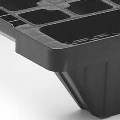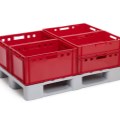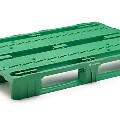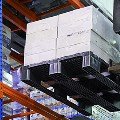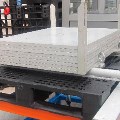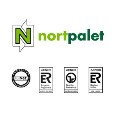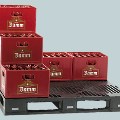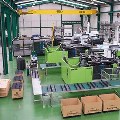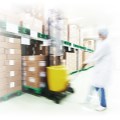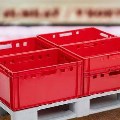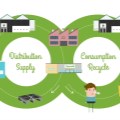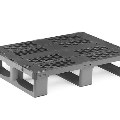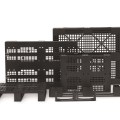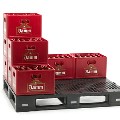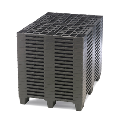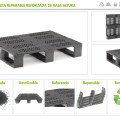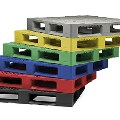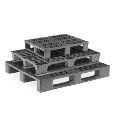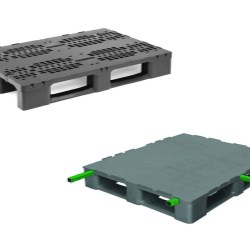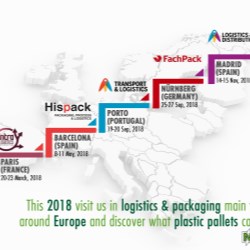If this is your company, CONTACT US to activate Packbase™ software to build your portal.


In an increasingly competitive market, packaging is an increasingly important element, and it is positioning itself as one of the best differentiation tools for thebrands that know how to make good use of it. Through the packaging it is possible to obtain efficiencies that reduce operating costs, improve the handling of the product, facilitate the replenishment in stores, increase sales, etc. ...
But before going into detail, it is important to ask: What is packaging? By definition, packaging is the science, art and technology of inclusion or protection of consumer goods for their manipulation, storage, distribution and sale.
For all designers, creative and advertising experts, the packaging has as its primary objective to attract the attention of customers and be the main window of communication with the consumer. However, from a logistic and operational point of view, the main objective of packaging is to enable efficient and efficient handling during the transportation of large quantities of consumer goods throughout the entire distribution chain, ensuring at all times the protection and preservation of the same. Therefore, the optimal use of packaging is in the balance between marketing and logistics.
The packaging is expressed through the packaging and cases that are developed to accompany the different consumer goods during the different stages of their life cycle. A container is a product used to contain, protect, manipulate, distribute and present merchandise at any stage of its production, distribution and / or sales process. On the other hand, a case is a container or wrapping that contains or transports the consumer goods on a temporary basis mainly to group units of a consumer good, thinking about their handling, transport and storage along the distribution chain.
Due to the rapid growth of the packaging sector, the European community has established a classification with the aim of differentiating the different types of packaging and packaging.
- Primary Packaging: Any packaging designed to constitute a point of sale unit for sale to the consumer or end user1. It is, therefore, the wrapping that protects, holds and preserves the merchandise, being in direct contact with the consumer good.
- Secondary packaging: Any packaging designed to constitute at the point of sale a grouping of a given number of sales units, whether it is to be sold as such to the end user or consumer, or it is used only as a means of replenishing the racks of the point of sale; it can be separated from the good without affecting the characteristics of the same1. A typical example is usually boxes of various materials or SRP (Shelf Ready Packaging). In cases where the product is transported in bulk the secondary packaging is in direct contact with the consumer good.
- Tertiary packaging: any grouping of sales units in an optimized way to facilitate handling, storage and transportation, as well as to avoid the inherent damage to these actions, and even to avoid direct physical handling and operate through machinery1. Therefore, the tertiary packaging is intended to withstand large quantities of secondary packaging, so that they are not damaged or deteriorated in the transport and storage process between the factory and the final consumer. In this case, there is no direct contact with the consumer good. The most common form is palletizing, with the 1200x800 pallet being the most common and there is an increasing trend in the use of pallets exhibitors of smaller measure.
After analyzing the different types of packaging, it can be concluded that the concept of packaging covers the whole of the loading unit, from the bottle and the box to the pallet, and even the film. It is, therefore, the letter of presentation of the different companies to their potential buyers, and also to the final consumer. It is therefore appropriate to take care of all the elements of the loading unit equally. What is the use of having a very attractive container, if it deteriorates during transport or is located at the point of sale on top of a dirty, deteriorated and unhygienic wooden pallet?
In recent years, numerous resources have been allocated for the innovation of primary and secondary packaging projects, with the aim of seeking brand differentiation. It has not been until recently that large companies have put their efforts in promoting innovation projects focused on tertiary packaging, where the final objectives are very diverse: to find improvements and efficiencies that translate into the reduction of operating costs, to introduce sustainable solutions And respectful of the environment, improve the safety and reliability of all operations, etc.
In terms of R & D in tertiary packaging, it is worth mentioning the booming use of the plastic pallet, being a key element in the packaging sector due to its innumerable advantages. From Nortpalet, we are committed to leading innovation in the plastic pallet in terms of measurable efficiencies in logistics, greater security in handling, new concepts of pallets that introduce innovative and intelligent ideas in operations, and above all maximize the sustainability of all The value chain through recycling and reuse.
Most of the plastic pallets used for the transport of goods are produced with recycled materials, which, because they are not in direct contact with food, do not require, unlike primary and secondary packaging, the use of virgin materials. For this reason, the plastic pallet is a strategic ally within the packaging because its production is done by recycling at the end of its useful life, the primary and secondary packaging that are transported along the supply chain offering a second opportunity to the materials used.
The main problem of packaging is its short life cycle, which translates into a high environmental impact because shortly after its creation becomes a residue. This way the plastic pallet transforms this waste into resources, this time with a very wide life cycle, to ensure maximum sustainability and minimize both carbon footprint and CO2 emissions from the supply chains of different sectors and Applications in which it is used. Increasingly, companies that are pushed by a growing environmental awareness in consumers incorporate this concept in their CSR taking responsibility for the environmental impact of all their processes.
Packaging is perhaps the element that makes the brand image of a particular consumer good. Aspects such as its functionality, its sustainability, its reuse and the attractiveness of its design are essential for the packaging, from the primary packaging to the pallet, to become a valuable addition to the well-known consumer goods.
1Directive 94/62 / EC of the European Parliament and of the Council of December, 20, 1994 on packaging and packaging waste.


